How to Grow a Forest Really, Really Fast — TED Fellows — Medium
How to Grow a Forest Really, Really Fast
Shubhendu Sharma is working to reforest the world, one tiny patch at a time
A forest planted by humans, then left to nature’s own devices, typically takes at least 100 years to mature. What if we could make the process happen ten times faster? Eco-entrepreneur Shubhendu Sharma’s figured out a way of growing native, self-sustaining forests anywhere in the world, with the efficiency of industrial processes. He tells us how.
Miyawaki is quite famous, and very old; he’s now 87. He has planted around 40 million trees all over the world, and in 2006, he won the Blue Planet Prize, the equivalent to the Nobel Prize in the environmental field. His method’s based on what’s called “potential natural vegetation”— a theory that if a piece of land is free from human intervention, a forest will naturally self-seed and take over that land within a period of around 600 to 1,000 years, with the species that would be native and robust, and that would require no maintenance. Miyawaki’s methodology amplifies that growth process to establish a mature, native forest in ten years — ten times the normal rate of forests planted by humans.
If a piece of land is free from human intervention, a forest will naturally self-seed and take over within a period of around 600 to 1,000 years. Akira Miyawaki’s methodology amplifies that growth process to establish a mature, native forest in ten years.
Intrigued, I volunteered with Miyawaki and studied his methodologies, and then planted a forest of 300 trees of 42 species in a 93-square-meter plot in my back garden. It was such a success that I decided to quit the car industry to start Afforestt, a for-profit company devoted to planting native forests for all kinds of clients, from farmers to corporations to city governments.
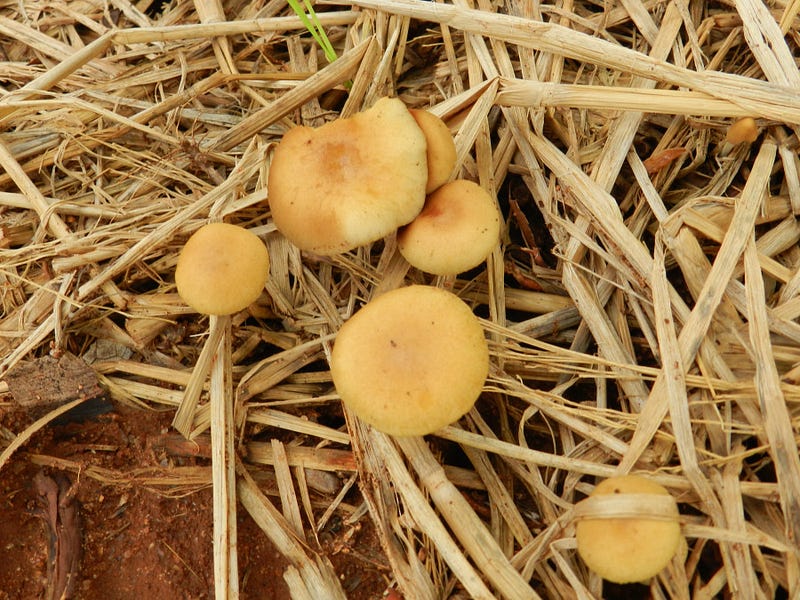
Here’s how it works. It takes six steps.
1. First, you start with soil. We identify what nutrition the soil lacks.
2. Then we identify what species we should be growing in this soil, depending on climate.
3. We then identify locally abundant biomass available in that region to give the soil whatever nourishment it needs. This is typically an agricultural or industrial byproduct — like chicken manure or press mud, a byproduct of sugar production — but it can be almost anything. We’ve made a rule that it must come from within 50 kilometers of the site, which means we have to be flexible.
4. Once we’ve amended the soil to a depth of one meter, we plant saplings that are up to 80 centimeters high, packing them in very densely — three to five saplings per square meter.
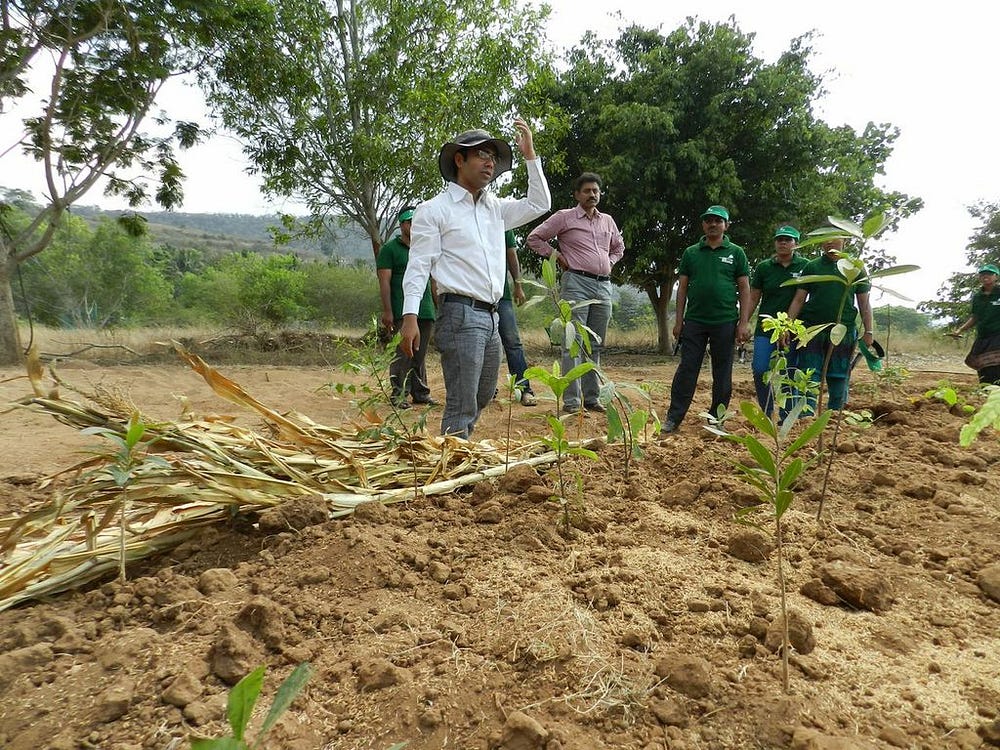
5. The forest itself must cover a 100-square-meter minimum area. This grows into a forest so dense that after eight months, sunlight can’t reach the ground. At this point, every drop of rain that falls is conserved, and every leaf that falls is converted into humus. The more the forest grows, the more it generates nutrients for itself, accelerating further growth. This density also means that individual trees begin competing for sunlight — another reason these forests grow so fast.
6. The forest needs to be watered and weeded for the first two or three years, at which point it becomes self-sustaining. After that, it’s best to disturb the forest as little as possible to allow its ecosystem, including animals, to become established.
Of course, you have to keep an eye on the forest in case of changing conditions. Rainfall patterns, for example, are different from what they were in the past, and that could affect native species. Oman, where I am doing a forestation project, is getting more rainfall year after year, so biodiversity is actually increasing. We’ve gone from having to plant thorny, bushy species that can grow in any desert to choosing more deciduous species.
This is why, for every species chosen, we do a thorough survey first. We go by real-time data, gathering information for our native species databases. So while a book on native trees may say that X, Y, Z species belongs to a particular geographic region, until we see that species grow full bloom and in good health in that region with our own eyes, we won’t select it as a forestation species.
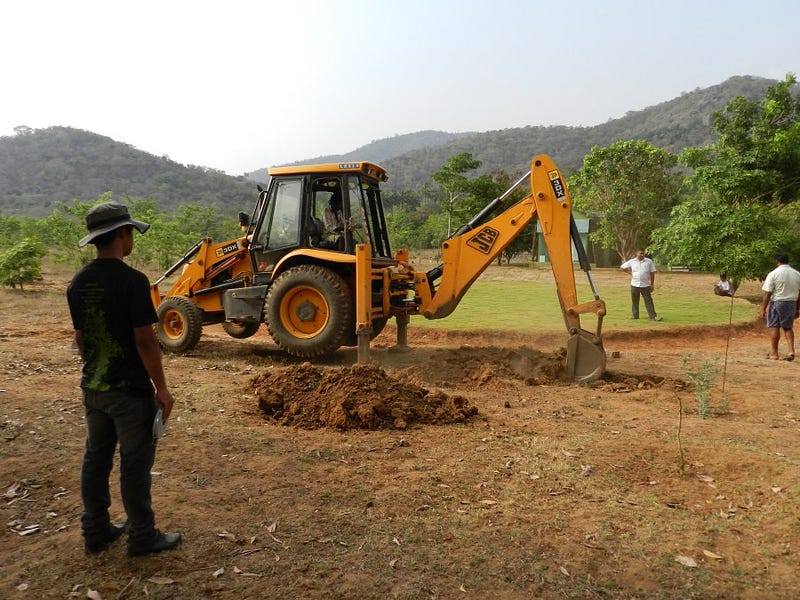
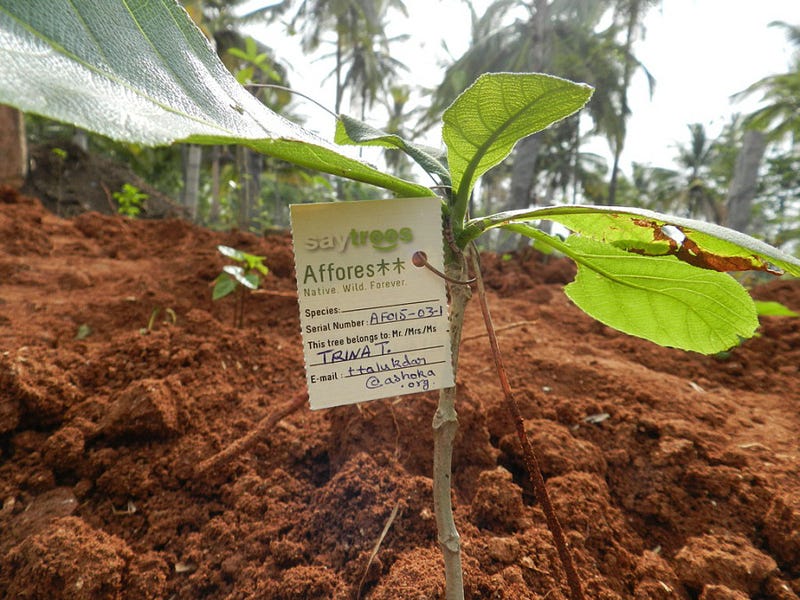
Here’s the funny thing: I have no expertise about how to determine native species for forests! But I worked around this by applying car manufacturing models. At Toyota, I worked with the supplier development team, organizing assembly lines and dispatch systems for cars being manufactured in India. I applied these manufacturing principles to forests, developing a computer program that registers tree species’ specific parameters, such as how high it grows, in what months it blooms, the kinds of temperatures it can tolerate, and so on. For example, if there’s a species that grows up to 50 feet, the one planted next to it should grow only up to 20, because we don’t want a conflict after five years. In other words, we use car-assembly logic to pick an ideal combination of trees to best utilize vertical space. So it’s not me or any individual expert who decides what species to plant, at what ratios: the software figures it out.
We have to let each forest grow and see what can or can’t live in complete harmony with surrounding species. Those that die, we do not replace — that’s nature. It evolves by trial and error.
For water, we have a pattern requirement of how much water is required per square meter. For example, in India, it’s five liters per square meter. But we cannot predict with 100 percent accuracy the behavior of forests after five or ten years, because you can’t know what kind of bird species, predators, or pests are going to attack in time. We want 100 percent survival, but the survival rate we have is around 92 percent. That 8% percent gap is what we work to bridge. We aim to take our methodologies to such perfection that no trees will die. But it’s still a natural process; we have to let the forest grow and see what can or can’t live in complete harmony with surrounding species. Those that die, we do not replace — that’s nature. It evolves by trial and error.
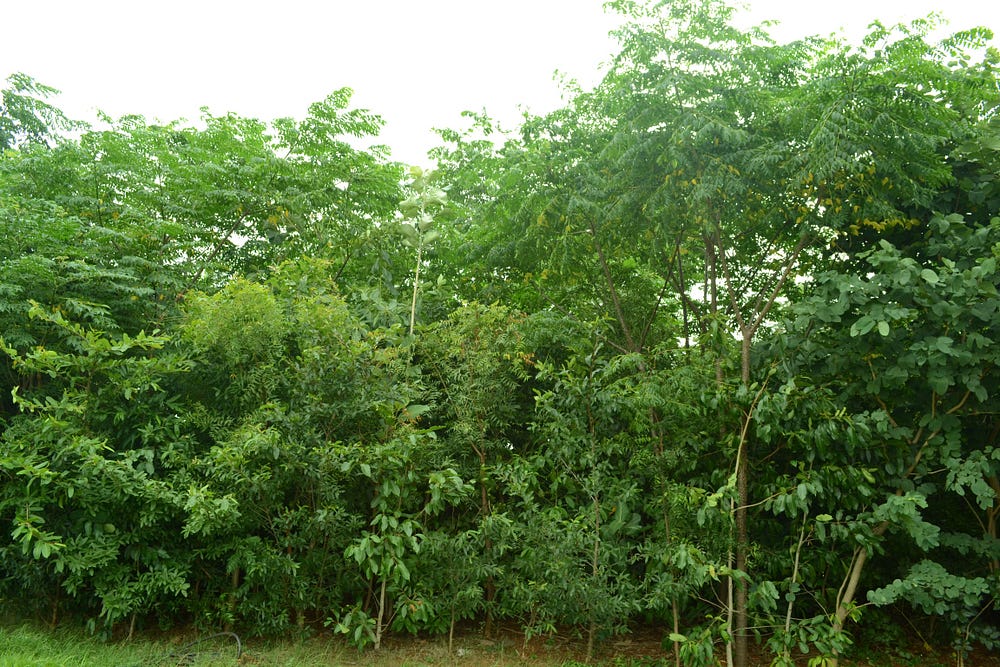
One great thing about growing a forest is that you can eat it. The forest I grew in my backyard has 42 species of trees, of which 18 are fruit. Our guava trees produce so much fruit that we harvest at least five kilos a day. All my neighbors are getting guava nectar that my mother makes because we have such an abundance.
But not everyone wants a forest full of food — and forests aren’t necessarily good for producing single cash crops. A native forest has to be biodiverse to thrive — including a mix of at least 50 to 100 different species. So if market demand encourages farmers to nurture only fruit species, they will ignore the non-useful species, and the forest won’t survive.
Forests aren’t necessarily good for producing single cash crops. A native forest has to be biodiverse to thrive — including a mix of at least 50 to 100 different species.
At Afforestt, we grow four different types of forest. If I’m designing a forest for a corporate setting, the primary agenda will be aesthetics — a higher ratio of species with flowers, for instance. If I make a forest primarily for the sake of water conservation, the tree species should grow huge and have deep roots. In a public park, we’d choose species that grow small fruits to attract birds, appealing to park visitors. A forest on a farm would include more fruit species in the mix — up to half, including nuts, which offer high value as they can be preserved for a long time. Other useful trees for farming communities include those that produce oil seeds, fodder for cattle, or firewood for humans. So the combination depends on space and the priorities of the client.
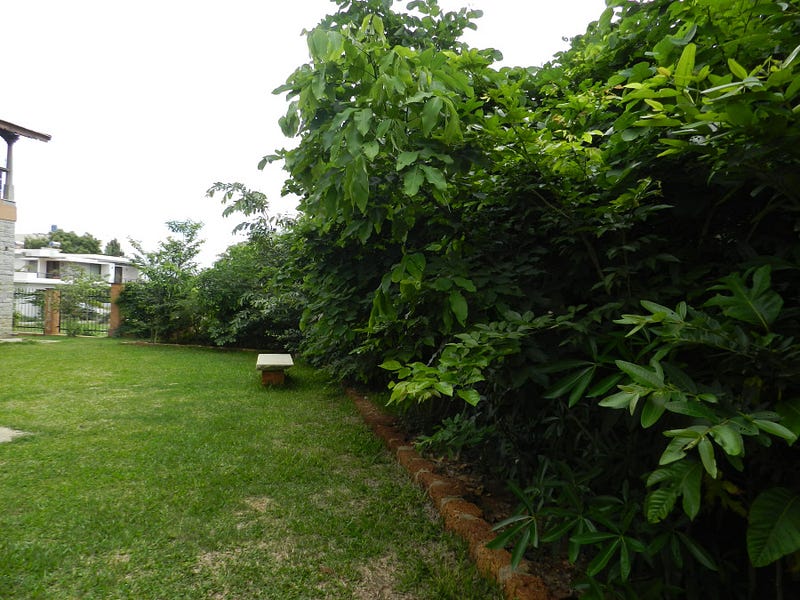
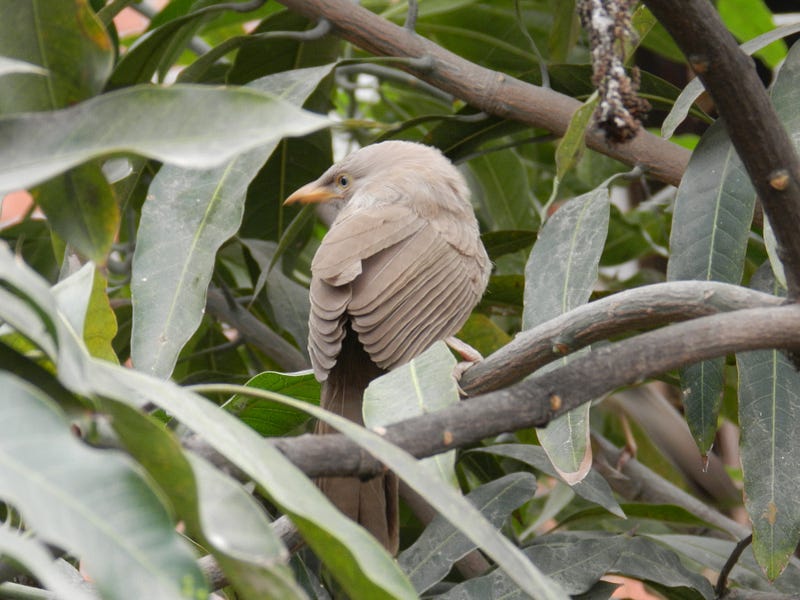
As for tangible environmental benefits, in my own garden, I’ve seen an increase from seven bird species to 17 in two years. I think if I were to do the same survey now, I’d find 20 species. Our groundwater used to disappear every summer, but the trees helped recharge our aquifer, so it returned after the second year, too. In cities, green areas improve air quality, increase biodiversity, and reduce the heat-island effect, which improves the microclimates of residential areas. Natural native forests are beneficial because they require no maintenance, in contrast to most urban landscaping, which is immensely resource-intensive, diminishing its ecological value. We also plant forests specifically to conserve groundwater tables.
I would love to partner with someone to conduct environmental studies and collect official data. It’s really expensive. There’s a specific scientific methodology to measure groundwater levels, for example.
So far, we’ve planted 43,000 trees for 33 clients. But our plan is to automate the system so that we can give anyone anywhere in the world step-by-step instructions on how to plant a native forest. We plan to crowdsource knowledge of native tree species; I’m working on a website for this part of the project and plan to launch it within a year. To make soil analysis easy for remote clients, we are also developing a small, GPS-enabled soil probe that will test soil and upload the data onto our server. When the probe is integrated with our database, at the push of a button you’ll know the soil constituents and what nutrients it needs, and we’ll be able to immediately send a complete species list and a detailed procedure.
In my backyard forest, I’ve seen an increase from seven bird species to 17 in two years… Our groundwater used to disappear every summer, but returned after the second year, too.
The hardware can be used to monitor the growth of this forest by reading how much sunlight is reaching the ground, changes in soil nutrition and moisture, and so on. We’ll launch five forest plantations in different places using this method, to prove that by using our methodology and following it step by step, anyone can make their own forest.
Once we’re able to share our afforestation methodology remotely, I believe we can increase scaling exponentially. Afforestt is a vehicle for offering afforestation methodology to people, but it’s the people who implement it who will make forestation scalable. Together, we can bring back entire lost forests.
Watch Sharma’s TED talk, “How to grow a tiny forest anywhere,” below.
A version of this interview was originally published on the TED Blog.

The TED Fellows program hand-picks young innovators from around the world to raise international awareness of their work and maximize their impact.
